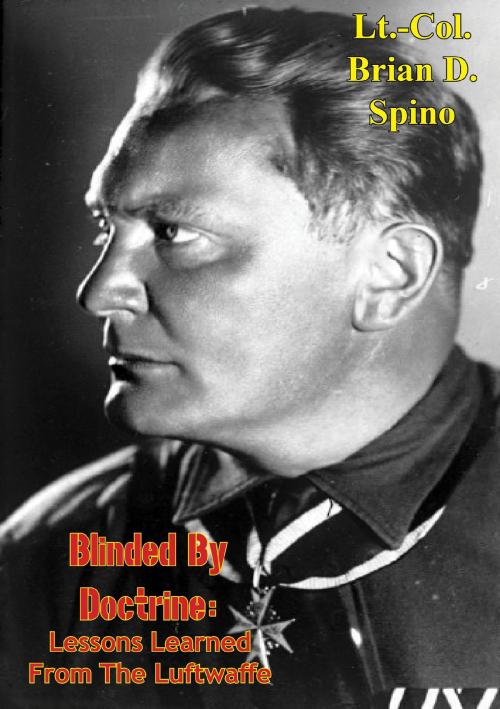Blinded by Doctrine
Lessons Learned from the Luftwaffe
Nonfiction, History, Germany, European General, Military, United States| Author: | Lt.-Col. Brian D. Spino | ISBN: | 9781789121827 |
| Publisher: | Arcole Publishing | Publication: | April 3, 2018 |
| Imprint: | Arcole Publishing | Language: | English |
| Author: | Lt.-Col. Brian D. Spino |
| ISBN: | 9781789121827 |
| Publisher: | Arcole Publishing |
| Publication: | April 3, 2018 |
| Imprint: | Arcole Publishing |
| Language: | English |
This paper will conduct an analysis of the failure of the Luftwaffe (1939-45) and identify practices for the United States Air Force to avoid. The analysis will address lack of vision and institutional inflexibility in crafting airpower doctrine, as well as explore the ensuing systemic mismatch of doctrine and strategy that characterized the performance of the Luftwaffe in World War II. The primary factor was Germany’s decision to develop a tactical air force lacking strategic effect. This choice would yield dire consequences once Luftwaffe leaders found themselves in a prolonged war of attrition while remaining persistently committed to airpower doctrine designed for rapid, decisive combat operations pursuing a strategy of annihilation. The study of this failure may identify areas the United States Air Force should avoid in the formulation of doctrine to meet projected airpower challenges in the operational environment of the 21st century. Simply, in the current volatile strategic environment, the United States Air Force must adapt relevant doctrine and pursue flexible transformation to meet the unconventional threat at hand while maintaining America’s dominance against traditional challenges.
This paper will conduct an analysis of the failure of the Luftwaffe (1939-45) and identify practices for the United States Air Force to avoid. The analysis will address lack of vision and institutional inflexibility in crafting airpower doctrine, as well as explore the ensuing systemic mismatch of doctrine and strategy that characterized the performance of the Luftwaffe in World War II. The primary factor was Germany’s decision to develop a tactical air force lacking strategic effect. This choice would yield dire consequences once Luftwaffe leaders found themselves in a prolonged war of attrition while remaining persistently committed to airpower doctrine designed for rapid, decisive combat operations pursuing a strategy of annihilation. The study of this failure may identify areas the United States Air Force should avoid in the formulation of doctrine to meet projected airpower challenges in the operational environment of the 21st century. Simply, in the current volatile strategic environment, the United States Air Force must adapt relevant doctrine and pursue flexible transformation to meet the unconventional threat at hand while maintaining America’s dominance against traditional challenges.















